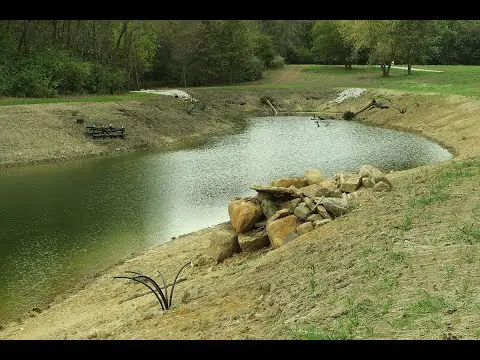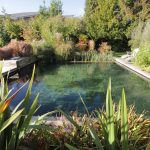Building a stock pond on your property can be an exciting and rewarding project. Whether you’re a rancher looking to provide water for your livestock or a nature enthusiast wanting to create a habitat for fish and wildlife, a well-designed stock pond can enhance the value and functionality of your land. In this comprehensive guide, we’ll explore the step-by-step process of building a stock pond, covering everything from planning and excavation to maintenance and environmental considerations.
### Planning Your Stock Pond
Before breaking ground, it’s crucial to carefully plan your stock pond to ensure its long-term success. Start by identifying the ideal location for your pond. Consider factors such as topography, soil type, and existing water sources on your property. It’s also important to check local regulations and obtain any necessary permits for pond construction.
### Site Selection and Design
Select a site that is naturally low-lying and can capture runoff water. Avoid areas with rocky or compacted soil, as they can hinder excavation and water retention. Additionally, consider the pond’s proximity to trees, as falling leaves can contribute to organic matter buildup in the water.
When designing the pond, determine its size and depth based on your specific needs. A larger pond will hold more water and support a greater variety of aquatic life, while a deeper pond can provide better thermal stratification and oxygenation for fish. Incorporate shallow areas for aquatic plants and wildlife habitat, and plan for an overflow structure to manage excess water during heavy rainfall.
### Excavation and Construction
With a clear plan in place, it’s time to start excavating the pond. Depending on the size and scope of the project, you may choose to use heavy machinery or opt for manual excavation. It’s essential to shape the pond’s contours to allow for gradual slopes and deeper areas, providing a diverse range of habitats for aquatic plants and animals.
As you excavate, carefully monitor soil conditions and address any issues that may affect water retention, such as compacted layers or excessive permeability. Consider lining the pond with a durable geomembrane to prevent seepage and ensure water containment.
### Water Source and Management
Once the pond is excavated, it’s time to fill it with water. Depending on your location and available resources, you may use runoff from rainfall, divert water from a nearby stream, or rely on a well or other water source. It’s important to monitor water quality and consider implementing aeration systems to promote oxygen exchange and prevent stagnation.
### Aquatic Planting and Stocking
Aquatic plants play a crucial role in maintaining water quality and providing habitat for fish and wildlife. Consider planting native vegetation around the pond’s edges and introducing submerged and floating plants to enhance biodiversity and water clarity. When stocking fish, select species that are well-suited to your climate and water conditions, and avoid introducing invasive species that may disrupt the pond’s ecological balance.
### Maintenance and Environmental Considerations
After the pond is established, ongoing maintenance is essential to ensure its health and longevity. Regularly monitor water quality parameters such as pH, dissolved oxygen, and nutrient levels, and address any imbalances that may arise. Control excessive vegetation growth to prevent overcrowding and maintain open water areas for fish and wildlife.
It’s also important to consider the environmental impact of your pond and implement measures to minimize erosion, sedimentation, and nutrient runoff. Utilize vegetated buffers and erosion control practices to protect water quality and preserve the surrounding ecosystem.
### Recreational Opportunities
In addition to its practical benefits, a well-designed stock pond can also provide recreational opportunities for landowners and visitors. Consider incorporating amenities such as fishing piers, wildlife viewing areas, and walking trails to enhance the pond’s accessibility and enjoyment.
### Conclusion
Building a stock pond requires careful planning, thoughtful design, and ongoing management, but the rewards are well worth the effort. By creating a thriving aquatic ecosystem, you can enhance the natural beauty of your property, provide water for livestock, and support a variety of recreational activities. With proper planning and maintenance, a stock pond can become a valuable asset for both landowners and the environment.





